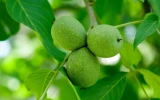3 Types of Walnut Trees in Michigan (With Pictures)
Michigan is home to approximately 10 million walnut trees, covering a significant portion of the state's forested land. These trees not only contribute to the state's biodiversity but also play a crucial role in the local economy, particularly through the production of walnuts and timber. You'll find these trees dotted across both rural and urban landscapes in Michigan.
Michigan is home to three types of walnut trees, notably the Black Walnut (Juglans nigra), the Butternut or White Walnut (Juglans cinerea), and the English Walnut (Juglans regia). These walnut trees not only provide rich-tasting nuts but also possess wood that's highly sought after for its quality and beauty.
The black walnut tree releases chemicals into the soil that can inhibit the growth of other plants nearby, a phenomenon known as allelopathy. What does this do to the trees? Learn more about it as you read further below.
Summary
- The Black Walnut is recognized for its deep furrowed bark and large stature (50–75 feet tall), thriving in full sun and well-drained soils across Michigan.
- The Butternut or White Walnut, native to North America, is identified by its light gray bark and sweet-tasting nuts.
- The English Walnut is adaptable to Michigan's climate, growing up to 35 meters with a need for full sun to produce its sought-after nuts and high-quality wood.
- All three walnut species not only offer ecological benefits through habitat and allelopathic interactions but also provide economic value through their nuts and wood.
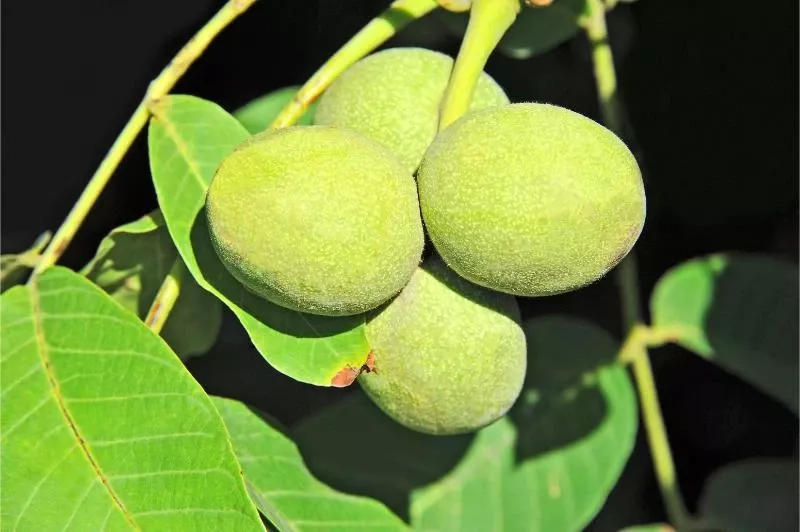
On this page:
| Species | Size (Height and Diameter) | Nut Characteristics | Habitat Preferences |
|---|---|---|---|
| Black Walnut (Juglans nigra) | 50-75 ft tall, 2-4 ft in diameter | Round, hard, thick-shelled nuts with deeply furrowed surface. Edible nutmeat is rich and flavorful | Deep, fertile, well-drained soils. Found in mixed hardwood forests |
| Butternut (White Walnut, Juglans cinerea) | 40-60 ft tall, 1-2 ft in diameter | Large, oblong, thick-shelled nuts with a rough surface. Nutmeat is sweet and oil-rich | Moist, rich soils, often found along streams and in bottomland forests |
| English Walnut (Juglans regia) | 30-50 ft tall, 2-3 ft in diameter | Large, round, thin-shelled nuts with a smooth surface. Nutmeat is mild and sweet | Deep, fertile, well-drained soils with full sun. Often planted in orchards or gardens |
Black Walnut (Juglans Nigra)
The Black Walnut, scientifically known as Juglans nigra, is a staple among Michigan's nut trees. As you explore the forests of Michigan, you may identify these deciduous trees by their distinctive leaves consisting of 15–23 leaflets with a central stem.
Another key identifier of the Black Walnut tree is the bark; dark brown to black and deeply furrowed, this feature stands out among the arboreal landscape.
Given its height of generally 50–75 feet, the Black Walnut is both majestic and functional. It thrives best in full sun and well-drained soil, preferring slightly acidic to neutral pH levels. You'll notice that it produces a distinctive fruit—a nut with a tough, green husk that reveals a hard shell inside.
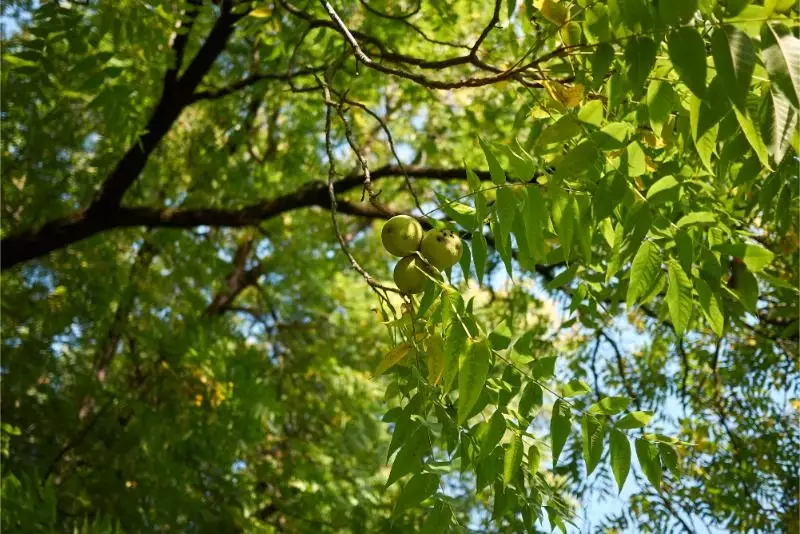
The nuts, also known as black walnuts, are not just edible; they're a valuable dietary component for wildlife, including squirrels. These nuts have a much stronger, more sweet and robust flavor compared to other walnuts, making them a sought-after choice for cooking and raw consumption.
Moreover, the Black Walnut is treasured beyond its nut production. Its wood is prized for making furniture like cabinets due to its dark, rich grain. Artisans and craftsmen value the walnut wood for its hardiness and lustrous finish. The husks have additional uses; they've been used historically as a dye.
In the dormant season, you'll notice its gray bark and bare branches standing against the Michigan winter backdrop, a reminder of the tree's ornamental and ecological importance.
In the warmer months, look for the male and female flowers, an integral part of the ecosystem that supports the Juglandaceae family, including hickories and other types of walnut trees.
Black walnuts produce a substance called juglone, which inhibits the growth of many other plants around them, a surprising natural strategy to reduce competition. These trees play a crucial ecological role, providing habitat for wildlife and utilizing allelopathy to reduce competition from surrounding vegetation.
If you're interested to grow black walnuts for profit, here's a detailed guide.
Butternut or White Walnut (Juglans Cinerea)
The Butternut, also known as White Walnut, is an endearing species within the Juglandaceae family. Native to North America, it's scientifically recognized as Juglans cinerea. You'll notice this deciduous tree by its distinctive light gray bark and the elongated fruits it bears, which are a type of drupe, often encased in sticky green husks that mature to a fibrous texture.
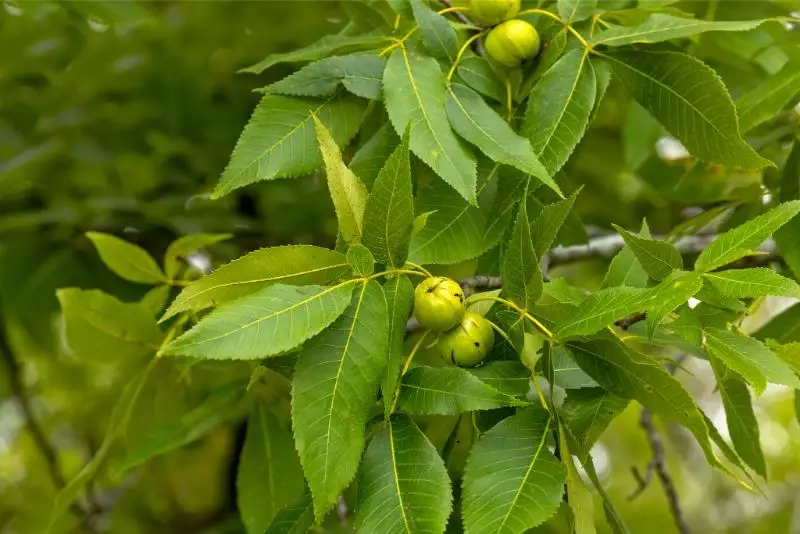
Here are a few distinct characteristics of butternut trees:
- Height: Typically reaching up to 20 meters, with cases of growth up to 40 meters.
- Leaves: Pinnate, 40-70 cm long, with 11–17 leaflets.
- Fruit: Edible nuts with a sweet taste, encased in a thick husk that opens when the fruit is ripe.
Habitat and ecology: Butternut prefers well-drained soils and often thrives in mixed hardwood forests alongside oak trees and hickories. Its ability to form a symbiotic relationship with the soil makes it an integral part of the ecosystem, especially for wildlife reliant on its seeds.
Uses: The nuts from Juglans cinerea are quite valuable, both to wildlife and humans. These edible nuts are sought after for their sweet flavor, suitably enjoyed raw or cooked. Additionally, the wood of the Butternut tree is prized for making furniture due to its light color and attractive grain.
English Walnut (Juglans Regia)
The English Walnut, also known as Juglans regia, finds its roots in Europe and Asia, but it has adapted well to Michigan's climate. This deciduous tree is favored for its compounded leaves, attractive rounded crown, and delicious edible seeds that turn up in a variety of recipes from soups to baked goods.
When you are planning to grow English walnuts, you'll need to ensure that the tree gets full sun for optimal growth and nut production.
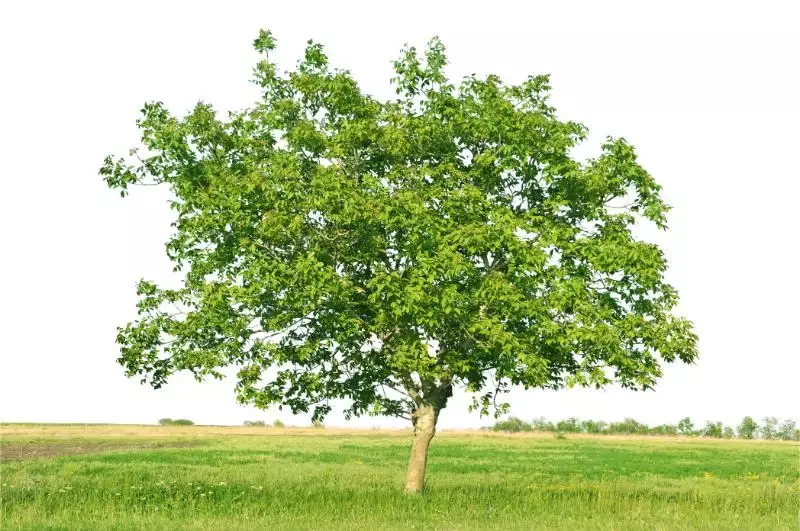
In Michigan, Juglans regia will reach a notable height of up to 35 meters, displaying a grand stature in your space. Throughout spring, you can enjoy its delicate, earthy-sweet flowers, which are an important step towards the harvesting season. Come winter, the tree sheds its leaves, entering dormancy until the warmer days return.
As for hardiness, English Walnuts are resilient. They thrive in Michigan's hardiness zones, where squirrels might be the first to notice the ripening nuts. These nuts, aside from culinary uses, are highly prized for their rich, distinctive flavor.
Beyond the nut production, Juglans regia's wood is sought after for creating furniture and cabinets due to its premium quality.
For your English Walnut trees to truly flourish in Michigan, it's beneficial to gather experience in proper care. This involves regular watering, drying the nuts post-harvest, and protecting them from critters.
Cultivation and care for walnut trees
Successful cultivation of walnut trees in Michigan demands understanding their specific needs, from planting location to the amount of sunlight they receive. Let's guide you through each step to ensure your trees thrive.
Planting and growth conditions
Your walnut tree will achieve its best growth when planted in an area that receives full sun, which means at least 6 to 8 hours of direct sunlight daily.
The soil should be deep, fertile, and well-draining. While young trees need regular watering, mature trees are more drought-tolerant.
During the planting process, ensure that the root ball is carefully spread out, and the soil is firmed around it to eliminate air pockets.

Common pests and diseases
Be vigilant about pests like squirrels, which are fond of walnut nuts, and insects like the walnut husk fly.
Diseases such as walnut blight can affect the foliage and nuts, reducing your harvest.
Implementing routine inspections and wildlife control strategies, along with appropriate fungicide or pesticide applications, can help manage these issues.
Harvesting and usage
Harvest time for walnuts is typically in early autumn when the husks turn yellow. Shake or knock branches gently to collect the fallen nuts. Remember to use gloves, as walnut liquid can stain.
Once harvested, walnuts can be dried for direct consumption or used in various recipes. Additionally, the resilient wood of walnut trees makes it highly sought after for creating furniture, cabinets, and veneer.



